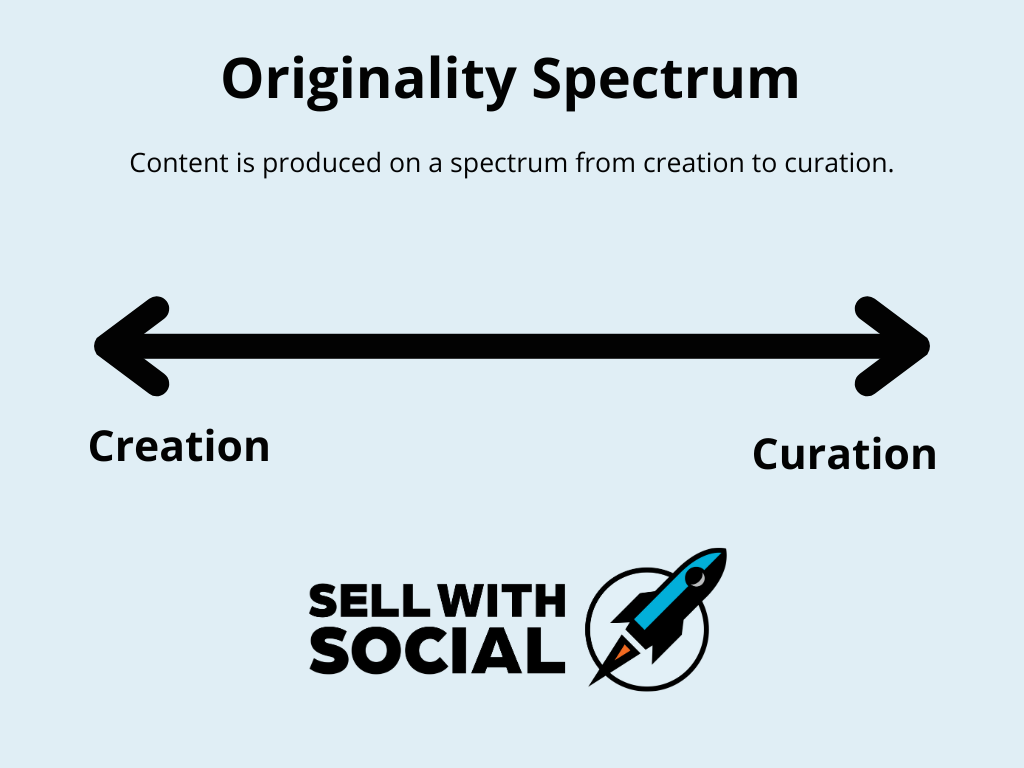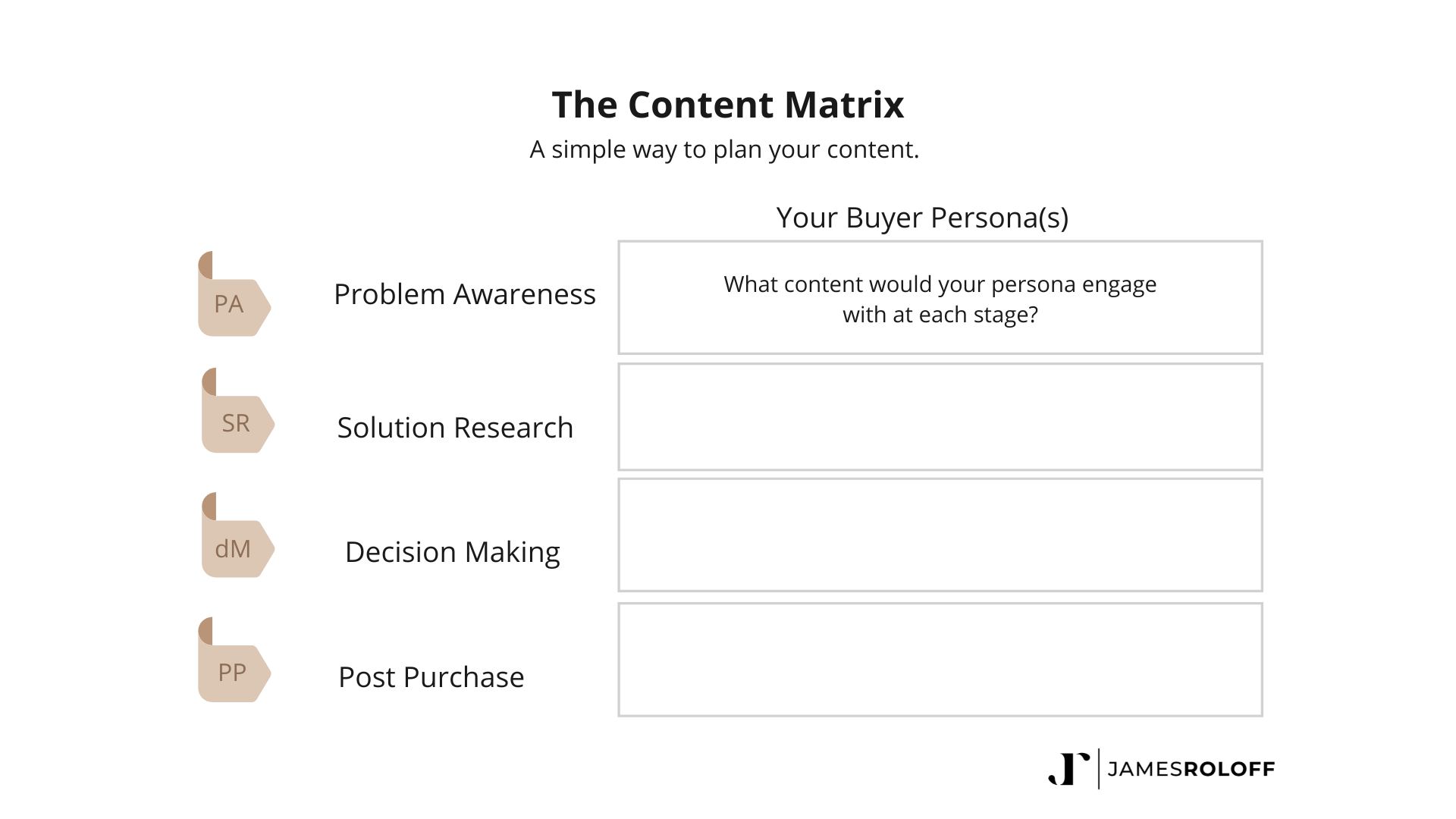The Guide to Content Creation for Social Selling
Discover Proven Content Creation Strategies

One of the most common struggles that social sellers face is creating content.
Not only can it be intimidating to publish your work to the outside world, but it’s also difficult to come up with a content strategy, develop ideas, and stay consistent with a content schedule.
So for this newsletter, I wanted to create an overview of important concepts you should know regarding content creation. And while this list is not exhaustive, I hope it can help you improve your content creation process.
Why Content Is King
You’ve likely heard the mantra, Content is King, before. And while a bit cliche, there is truth behind it.
Creating content is the absolute most effective way to grow through digital channels.
People go online to consume content. We click, scroll, and search for answers, entertainment, and inspiration.
And whether it’s text, videos, or audio, content is at the heart of the internet. Represented by the data packets that travel over the fiber optics cables and satellites to reach you.
The BEST way to expand your reach through digital channels is to get comfortable creating and publishing content.
No content = no reach. It’s that simple.
So while there is no “if” you should create content, there is flexibility in the “how,” “where,” and “what.”
The key is to find the right content that is effective for you and your audience.
Creation vs. Curation
“There is no such thing as a new idea. It is impossible. We simply take a lot of old ideas and put them into a sort of mental kaleidoscope. We give them a turn and they make new and curious combinations. We keep on turning and making new combinations indefinitely; but they are the same old pieces of colored glass that have been in use through all the ages.”
― Mark Twain
Let’s start by dispelling a myth about content creation - there is no such thing as 100% original content.
As humans, we are continually building upon the work of others. Whether directly or indirectly, we use the ideas and experiences we’ve accumulated over our lives in every action we take.
Most content is produced on a spectrum between creation and curation. One side is primarily original content, while the other is mostly curated work from others’ ideas.

But even the most creative, original people are still influenced by the work of others. They use their creative abilities to create new forms from existing ideas.
On the flip side, some of the best content producers in the world have perfected their ability to be expert curators. These people can sort through the noise of their industry and curate content highlighting the signal their audience needs to know about.
As you reflect on the kind of content you create, think about if you want to be mainly on the creative side or if you enjoy connecting the dots through curated content. There is no right or wrong answer. It’s more of a personal approach to what is best for you.
Types of Content
You’ll also want to consider what type of content you want to create.
What I’ve found through my coaching is that everybody has their type of content they tend to prefer creating. Some of us are analytical-minded, while others enjoy more of a storytelling approach.
Generally speaking, I see most digital content created in one of the following buckets:
- Analysis - This is content where you take a deep dive into a topic and provide an expert analysis of what is happening. You analyze it and provide insights to your audience.
- Reporting - You can put on your journalistic hat and create content to provide objective coverage on specific topics, bringing important news to your audience.
- Practical - Content that provides practical advice is a great way to offer actionable insights. This includes content like how-tos, FAQs, and explainers.
- Creative - If you enjoy more of a creative approach, you can weave aspects of storytelling or design elements into your content.
More often than not, you’ll end up using a combination of a few content types. You'll find what works best for you depending on your industry and how you like to present information.
You’ll also find your sweet spots in the mediums you create your content. Do you prefer writing or creating videos? Do you like short form or long form?
I like writing long-form (like this article), but also producing short-form videos. It depends on my goals for the content and the channel I intend to distribute.
My suggestion here is to experiment with your content types. Start with what feels natural to you, but continually try to branch out with new methods to see if you can grow your content skills in other areas.
Discovering Content Ideas
If I had a Bitcoin for every time I heard “I don’t know what to write about” uttered by a sales rep… Well, you wouldn’t be reading this newsletter.
Here’s the thing about content ideas - they have to come from somewhere. There is no magic wand you can wave or wall you can stare at long enough to give you the perfect idea for new content.
Every successful content creator I talk to has multiple streams of inspiration that help them feed their content strategy.
More often than not, it’s some combination of the following:
- Customer Discussions - The topics of conversation that happen between you and your customers (and prospects). Whether it's about industry trends, common problems they are encountering, or questions about the buying process itself. Customer discussions are a goldmine of opportunity to discover new ideas for content.
- Books - Most content creators are prolific readers. They use books as inspiration by taking ideas from books, then applying them to their specific industry or product/service.
- Podcasts - Podcasts often provide great content ideas, facilitating engaging conversations with people in or adjacent to your industry.
- Social Media - You’ll get content ideas by following others on social networks. If done authentically, emulating what already works can give you a blueprint for success.
- Everyday Life - You can also draw inspiration from everyday life. We are all complex people, and something discussed with your family or friends could also be relevant to your professional audience.
The key takeaway here is that you should actively seek inspiration for content. The more great content you consume, the better you can reformulate it into valuable content for your audience.
Who is your audience?
Beyond the content ideas themselves, you’ll also want to align your content to your specific audience.
This means, of course, that you must have a defined audience. Who is it that you are going to be creating content for?
A common mistake I see in people new to social selling is that they don’t know who their audience is. They simply create content for the sake of creating content.
That is a recipe for lackluster engagement.
So here are two steps you can take to align your content with your audience:
Step 1 - Define Your Persona
Define a buyer persona that is a fictional character whom you can create content for. Be specific with this persona, making them “real” with a name, age, location, life story, etc. You should use your existing customers as inspiration when developing your persona.
With each piece of content you create, you can create it for them. You’ll be shocked how much easier this makes the creation process, as you now have a relatable person to use for context to your content.
Step 2 - Create a Content Matrix
With a persona defined, I’d then recommend creating a content matrix. This framework lists your persona alongside the stages of the buyer’s journey process in a simple matrix.

With your matrix created, you can plug in content ideas that align with your specific buyer persona at each buyer’s journey stage. This will enable you to be intentional about who the content is for and at what stage in the buying process the person will engage with it.
Capturing and Organizing Ideas
So you’re feeling good now. You know what type of content you want to create, have some sources of inspiration for ideas, and even have defined your audience. But you have one lingering question - how do I capture and organize my ideas?
While I’d like to say that there is some foolproof system or perfect software for content creation, the answer is simple - whatever works for you.
In my experience working with social sellers, most of us use very basic systems to capture and organize our ideas.
I use a task manager (Todoist), which allows me to note down ideas as they pop into my head quickly. I keep most ideas as “to-dos” in a particular folder and then refer to that list whenever I’m sitting down to create content.
Here are the most common methods I’ve seen work:
- Spreadsheets
- To-do lists
- Notion
- Google Docs
- Notes app on Smartphone
- Emailing Yourself
You do not need a fancy content-tracking system. You only need the simple system that works for you.
If you were managing the social content calendar for Nike or Disney… sure, you can invest in some software for content planning. But the average social seller just needs to find a way to jot down ideas and organize them for future use.
Consistency in Posting
“Fish don't like to be on the hook. People should be on the hook.”
-Seth Godin
You need to stay consistent with your content creation if you want to see any meaningful results. Building a social selling strategy is a long-term investment.
And the best way to stay consistent with your content creation is to create the habit. You need to make creating content part of your everyday routine. Just like brushing your teeth or exercising, creating content is just something you do.
When you first start, each piece of content you create will feel challenging. But over time, you’ll streamline your process and be able to create effective content efficiently.
Set a Schedule and Stick to It
The key here is to set a schedule and stick to it.
Figure out the cadence of how often you will post, set the days and times you will publish, and do not deviate from them.
At the time of this writing, my content schedule is this:
- LinkedIn posts every weekday morning. Mondays are funny (to me) memes, Tuesdays are educational, Wednesdays promote my newsletter, Thursdays are educational, and Fridays are entertainment (usually a poll or video).
- Newsletter sends each Wednesday morning. This is my long-form educational content.
- Live events each month. Each month I schedule one live event via webinar or LinkedIn Live that gets me in front of my audience in real time.
This is my schedule. Creating this content has become a habit and part of my regular routine.
Will missing a day ruin my social selling strategy? Of course not! But, missing enough days or making enough excuses puts me at risk of losing the habit of content creation, which would harm my social selling results.
So as noted above, create your schedule and stick to it. Starting small is okay, such as one LinkedIn post every Wednesday. But you need to follow through with it.
Your Secret Sauce
As a final note, I want to talk about your secret sauce.
This is the part of your strategy that NOBODY else can recreate.
And that, of course, is you.
There is only one you - with your background, your knowledge, and your perspective. As you create your content, be sure to be authentic in your approach.
You don’t need to be a social media influencer. In fact, you should be focused on your micro-audience. Because at the end of the day, quality trumps quantity in terms of the audience you can develop through a social selling strategy.
You’ll have 0 competition in the marketplace of “you.”
People will want to work with YOU. Buyers will want to buy from YOU. And best of all… you get to be YOU.
What other strategies do you use to create content for social selling? Share your thoughts in the comments below!
Also, if you’ve enjoyed this article, please forward it to your friends and colleagues. I appreciate you helping to grow the Sell with Social community!
